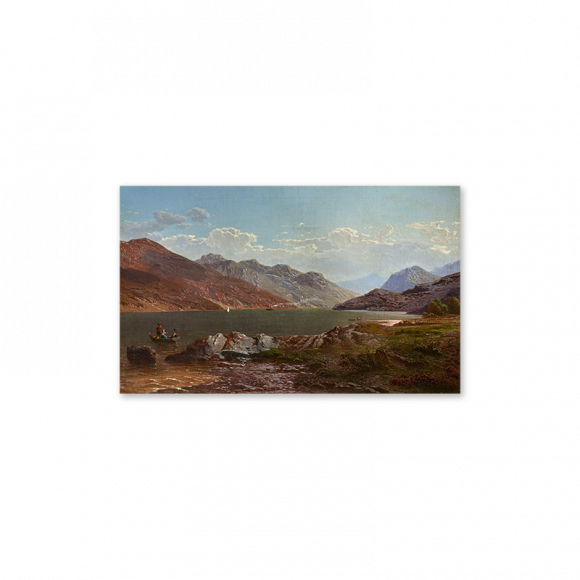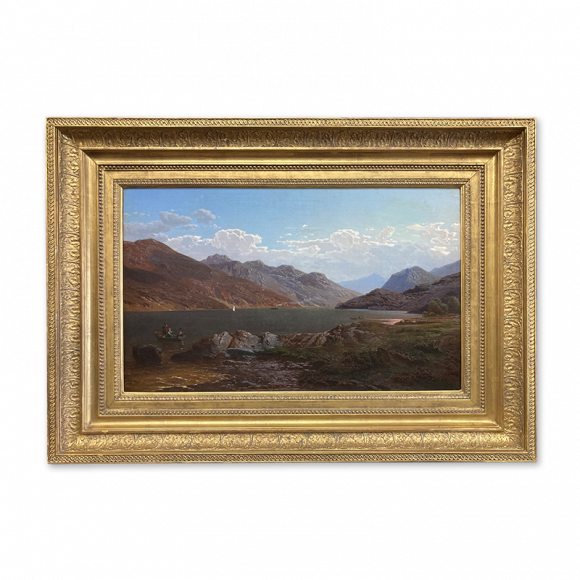This remarkably well-executed Scottish landscape is the work of Alfred F. Roffe, who was probably working from about 1850 through until 1890. With his unusual surname he must have belonged to that quite numerous family of artists called Roffe, who emerged initially as successful engravers at the beginning of the 19th century.
John Roffe (1769-1850) and Richard Roffe (1781-1846), probably brothers, were born and worked in London. Both concentrated primarily on engraving the work of architects and sculptors. Another Roffe, again probably a brother, was Robert Cabbell Roffe (1780-1839), who was also an engraver of some note. He in turn produced three children: Alfred T Roffe (1803-1871), Felix R Roffe (1814-1887) and Edwin Roffe (1825-1891). These three continued in the tradition of Roffe engravers right through the 19th century.
From this family of engravers, and of the same generation as this last trio, emerge two oil painters, William John Roffe (fl.1845-1889) and our present painter Alfred F. Roffe. Both appear to have concentrated primarily on landscapes and their lists of exhibited pictures show them to have been in Wales, in Scotland and in the Lake District. Like the rest of their family they were based in London. However, by their day the railways meant that accessing previously remote parts of the country had become much easier.
The present painting is a very precise example of highland landscape painting in the 19th century. Queen Victoria’s enthusiasm for the highlands had engendered a demand for depictions of Scotland of all sorts. From the 1840s onwards, inspired by the royal example and of course by the romanticism of Sir Walter Scott’s novels and the poetry of Robert Burns, artists were flocking to the highlands to paint the impressive scenery and as the century moved on pictures of deer and highland cattle as well. By the 1870s - and for a good few decades after that - the prevailing style of brush-stroking of such artists would have a looseness and quickness, almost a whiff of Impressionism, about it. This is also true of Roffe in his later work. But in this present picture there is a notable classicism of composition and a clarity and sharpness of detail in his execution. This must place our picture closer to 1850, so an early work for him. Roffe at this stage is still aiming effectively towards some element of the sublime, as trumpeted by the romantic movement in the first half of the century. And in this way his work here is redolent of the work of that very interesting earlier Scottish landscape painter John Knox (1778-1845).




